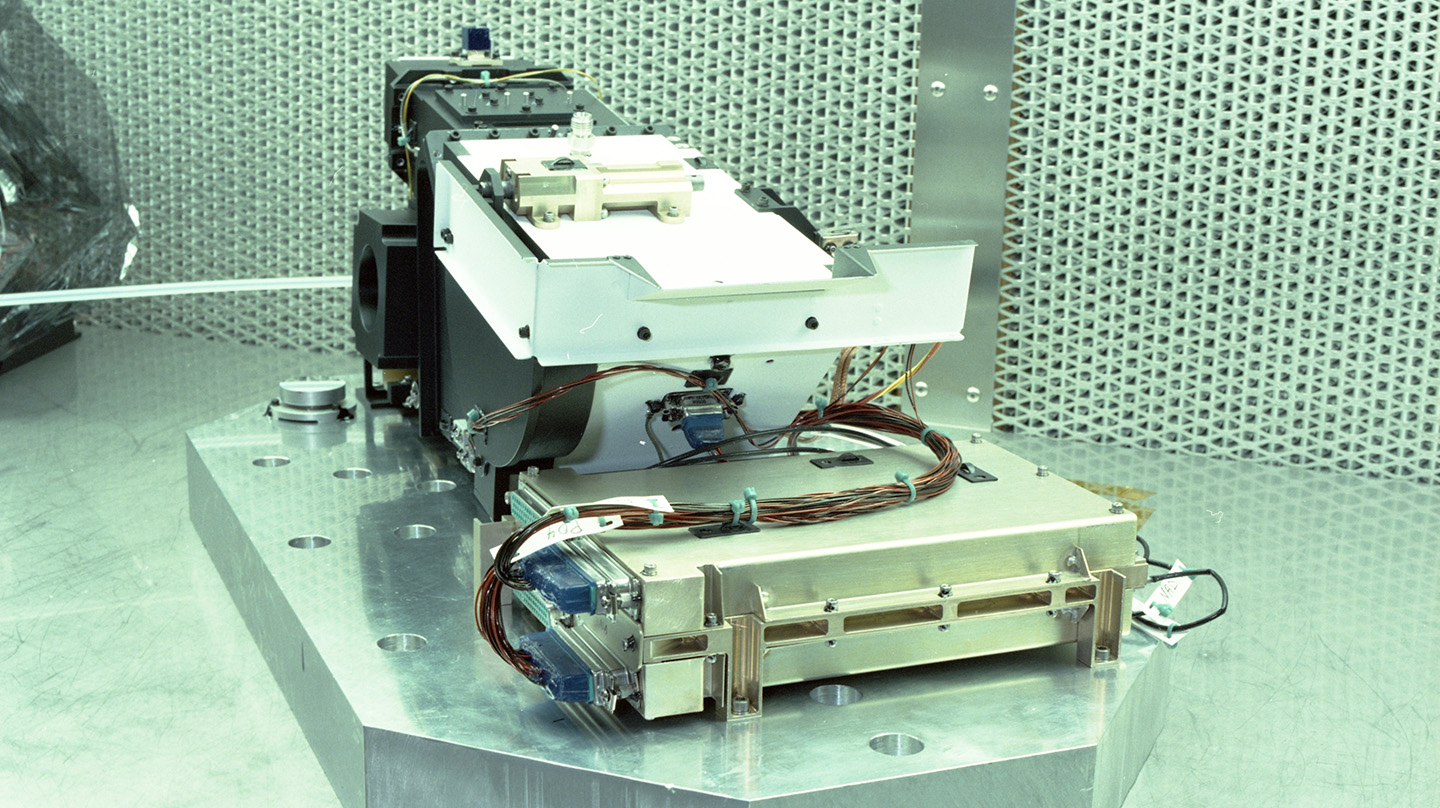Press Release
Johns Hopkins APL-built Ultraviolet Imager Celebrates 20th Anniversary
A pioneering instrument in upper atmospheric research and exploration of the Sun’s impacts on Earth has achieved a major milestone.
Twenty years ago, the first Special Sensor Ultraviolet Spectrographic Imager (SSUSI) launched. The instrument, built at the Johns Hopkins Applied Physics Laboratory in Laurel, Maryland, combines spectrographic imaging and photometric systems to remotely sense the ionosphere and thermosphere, both part of Earth’s upper atmosphere.
SSUSI (pronounced “Suzie”) was developed and employed on four orbiters for the Defense Meteorological Satellite Program (DMSP), a Department of Defense program that deploys low-Earth-orbit satellites to gather important environmental data. The instrument’s reach extends to multiple APL-led NASA missions.
“It has revolutionized the way we study the upper atmosphere,” said Larry Paxton, principal investigator for SSUSI in APL’s Space Exploration Sector.
Wake Up, Little SSUSI
SSUSI was turned on for the first time on Oct. 30, 2003. The instrument measures a part of the spectrum of light, referred to as the “far ultraviolet,” that humans cannot see. It employs a special sensor to detect physical and chemical processes happening in the ionosphere and thermosphere, which occupy the same region in the boundary between atmosphere and space. The instrument also has the unique ability to monitor the aurora — light displays in Earth’s sky — during the day and night.
SSUSI is able to sense changes in Earth’s atmosphere and the aurora, such as increases in atmospheric drag, that can alter the orbits of satellites. Predicting these changes is essential to preventing collisions in space or slowdowns in the movement of satellites.
“When the Sun goes through its cycle from solar minimum to solar maximum, that atmosphere heats up and expands, and that changes the force that satellites feel,” Paxton said.
After 2003, three more SSUSI instruments launched on DMSP satellites in 2006, 2009 and 2014. Data from the instruments is used by the U.S. Air Force 557th Weather Wing.
Twenty years later, SSUSI has helped transform what we know about the upper atmosphere and how it’s affected by the Sun. The original SSUSI remains active and continues to transmit data. “It's been a tremendous opportunity for us because we’ve had this data collection going on for two solar cycles,” Paxton said.
Lessons Learned
Brian Wolven, a research scientist at APL, started working with SSUSI in 2001 after completing his doctorate at Johns Hopkins University, where he focused on far ultraviolet remote sensing of Jupiter’s atmosphere and also worked on the Space Telescope Imaging Spectrograph aboard NASA’s Hubble Space Telescope.
“There is the initial feeling of being overwhelmed,” Wolven recalled of his early days working on SSUSI. “It’s a totally new instrument. Unlike the instruments on Hubble where they have volumes of documentation, we had to create it as we went.”
Wolven said his experience working on SSUSI helped improve his ability to troubleshoot when glitches would appear.
“You have to be sort of a science detective — look for the clues in what data you do have and try to fit all the pieces together to figure out what's going on with the instrument and try to make the data products as accurate as you can,” he said.
Paxton said data collected by SSUSI not only offered unprecedented insight into Earth’s upper atmosphere but also provided opportunities to connect with hundreds of scientists worldwide.
“You start to expand your scientific horizons as you talk to more people about using the data, what they’re trying to do with it, their science problems,” Paxton said. “It's been a tremendous learning experience.”
An Inspiration for APL Missions
SSUSI played a key role in the development of sensors used in other APL-led NASA missions, such as the Global Ultraviolet Imager for the Thermosphere, Ionosphere, Mesosphere Energetics and Dynamics (TIMED) mission, which has provided critical data on the Sun’s influence on Earth’s upper atmosphere since launching in 2001. On Dec. 7, TIMED marked the 22nd anniversary of its launch.
SSUSI also inspired the design of the Near-Infrared Spectrograph used on the Near Earth Asteroid Rendezvous, the first mission to orbit and safely land on an asteroid.
“The instrument is an example of APL’s decades-long experience studying space weather effects, the collection of phenomena from auroras to geomagnetic storms generated by the Sun, and how they affect us on Earth,” said Andy Driesman, APL’s mission area executive for Civil Space Flight in the Space Exploration Sector.
APL leads several missions focused on Sun-Earth connections, including Parker Solar Probe, which is flying closer to the Sun than any spacecraft ever to deliver critical data on solar activity, and the Electrojet Zeeman Imaging Explorer, which will provide deeper knowledge of the auroral electrojets flowing above Earth’s poles when it launches in 2024.
Although data gathered by SSUSI has been cited in thousands of papers, Paxton said it’s the connections with fellow mission team members that truly matter.
“You want to have a legacy you can pass on,” said Paxton. “Part of that is to have the people that you’ve worked with since they got out of school lead missions themselves. Those are the kind of things that mean a lot to me.”
SSUSI’s many data products are available to the public; learn more at ssusi.jhuapl.edu.
